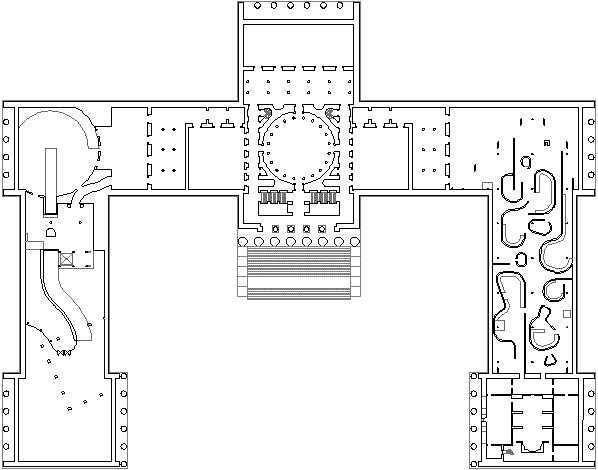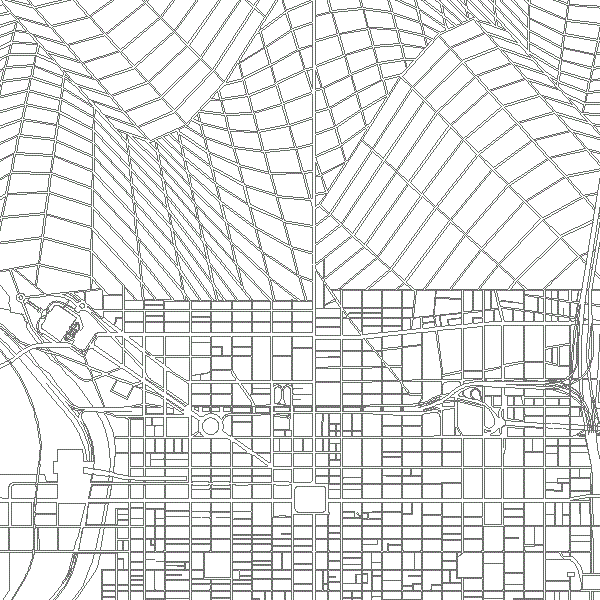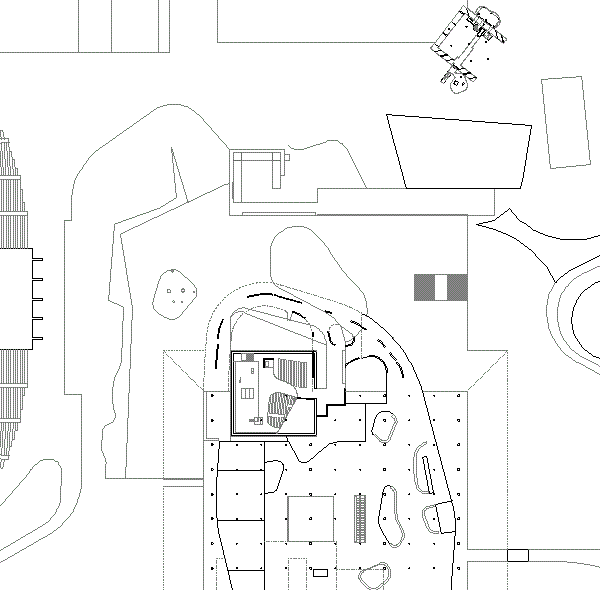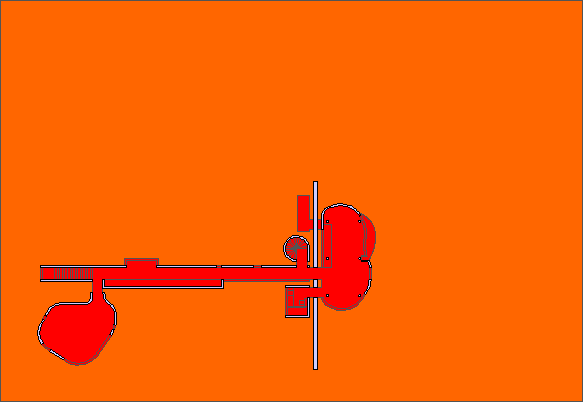Cut & Paste Museum:

ichnographia non-virtual non-context:

3 black holes in the Michelin Misguide
| |
atemporarily under deconstruction:

virtue2vicegrip machine4living:

you say: theory is only a textually generated infill (because the domineering cultures of this planet are text-based) in the gap between shelter and architecture.
I say: kaleidoscopic lacunae
| |
2008.12.03 00:44
where is the good new architecture?
Is there really all that much difference between 31 December 1999 and 1 January 2000? They're arbitrary place setters, and not the demarcation of disticnt different times. Metaphorically, the calendar is the cart, not the horse.
Personally, I see the Seattle Library design going back to Kahn's [and Tyng's] mid-1950s Municipal Building designs for Philadelphia. Historical analysis within a space-time continuum is more ongoing productivity and less end-product.
2008.12.03 01:50
where is the good new architecture?
I'm sorry, but I just don't see arbitrary calendar dates and market value events as some kind of cause-and-effect ways to analyze, evaluate or categorize the evolution of architectural design. You mention the connection of Eisenman to CCTV, and I find that more relevant then whether CCTV is on a/your list of top 5 21st century buildings so far. And look at Le Corbusier's St. Pierre at Firminy-Vert, designed 1962, finally built a few years ago. Also Hedjuk's Bye House.
I prefer to watch architecture history as it actually unfolds, and not through the aperture of somewhat artificial markers.
2008.12.03 08:00
pragmatists turning political?
I listened to most of the lecture while doing other work. Interesting, and likely even fruitful, typological analysis in terms of forms and how they may relate to programs and usage, but there remains the hint of force-fit and an even horizontal shift from 'iconic' analysis/design to 'political' analysis/design. As to this work's place within the continuum, I like how this is now being reenacted.
2009.01.29
Lost's ending
I now suspect, after seeing the third episode of Lost season 5 last night, that Lost will end with all of its original cast alive and together. This is how I see the current time traveling coming to a conclusion. It will be like Finnegans Wake and like Il Campo Marzio. Too bad Bloomer didn't make this vital connection.
So now it's exploration of the possibilities of the space-time continuum. Like Proust was a neuroscientist, was Piranesi, with the Ichnographia Campus Martius, a scientist of the fourth dimension? (Here is where I have to review Dixon's "Ichnographia as Uchronia".) Is Ichnographia Quondam also a study/experiment of architecture (and urbanism) in the fourth dimension? For IQ the time continuum connection is the Axis of Life/Benjamin Franklin Parkway connection, which comes after Piranesi's own Porticus Neronianae/St. Peter's connection.
Are the recombinant, appositional buildings of Quondam studies / experiments of architecture in the space/time continuum? Is that what they always have been? (Here is perhaps where I reread Geometry, Relativity and the Fourth Dimension.)
And what of The Odds of Ottopia? Did it all have a sense that even I did not fully understand? Bilocation was a significant part of the story. A step beyond Theatrics Times Two? What is Bilocation2 or Bilocation3, etc.--the studies of further powers within 2 = odd.
Quondam and Museumpeace as bilocation theaters? [tangental thought of Lost ending post at archinect written cryptically, with hints galore and lots of potential link at Quondam and Museumpeace] And all my posting activity over the last 12 years as writing / existing within the continuum as opposed to just within reality itself. Just looking now at the Virtual Domain collages I again see an architecture within the space-time continuum--the theme is widely present throughout my work, and I can now see on what foundation my further work rests. IS Quondam (and Museumpeace getting there) impenetrable becaue of its space-time existence? its slippages in and out of various time frames? (Do I write a comment at things.net?)
This is a great note because a breakthrough into understanding my (design) work is abundantly more clear. There is much here for me to elaborate on further, and I could formorly write about what Quondam is all about and indeed explain my work as a further approach to architecture. Does this also expalin my further approach to art?
And now, before I go to read Dixon's text (Uchronia), I'll end by mentioning that I now have to think about the relationship of reenactionary architecturism to traveling in the space-time continuum.
|